They sometimes say, “even a donkey doesn’t bump against the same stone twice”,
Well, I must admit with shame, apparently I do.
Well, it all started in November 2022, when I bought the E-M5 Mark III 12-200mm Kit from the OM System shop and got a great deal, €1199 instead of €1799 for the camera and lens. I actually just wanted the E-M5 MK III body, but what I paid was actually the normal price for just the body at that time, so I basically got the lens for free.
The Olympus ED 12-200mm f/3.5-6.3 is a superzoom lens, and we all know that superzooms don’t perform as well as regular zooms. That being said, to match this range with regular zooms, you would need two to three lenses to cover the same range. And that’s why people sometimes choose this type of lens, for travel, backpacking, etc. – to carry less stuff, less weight.
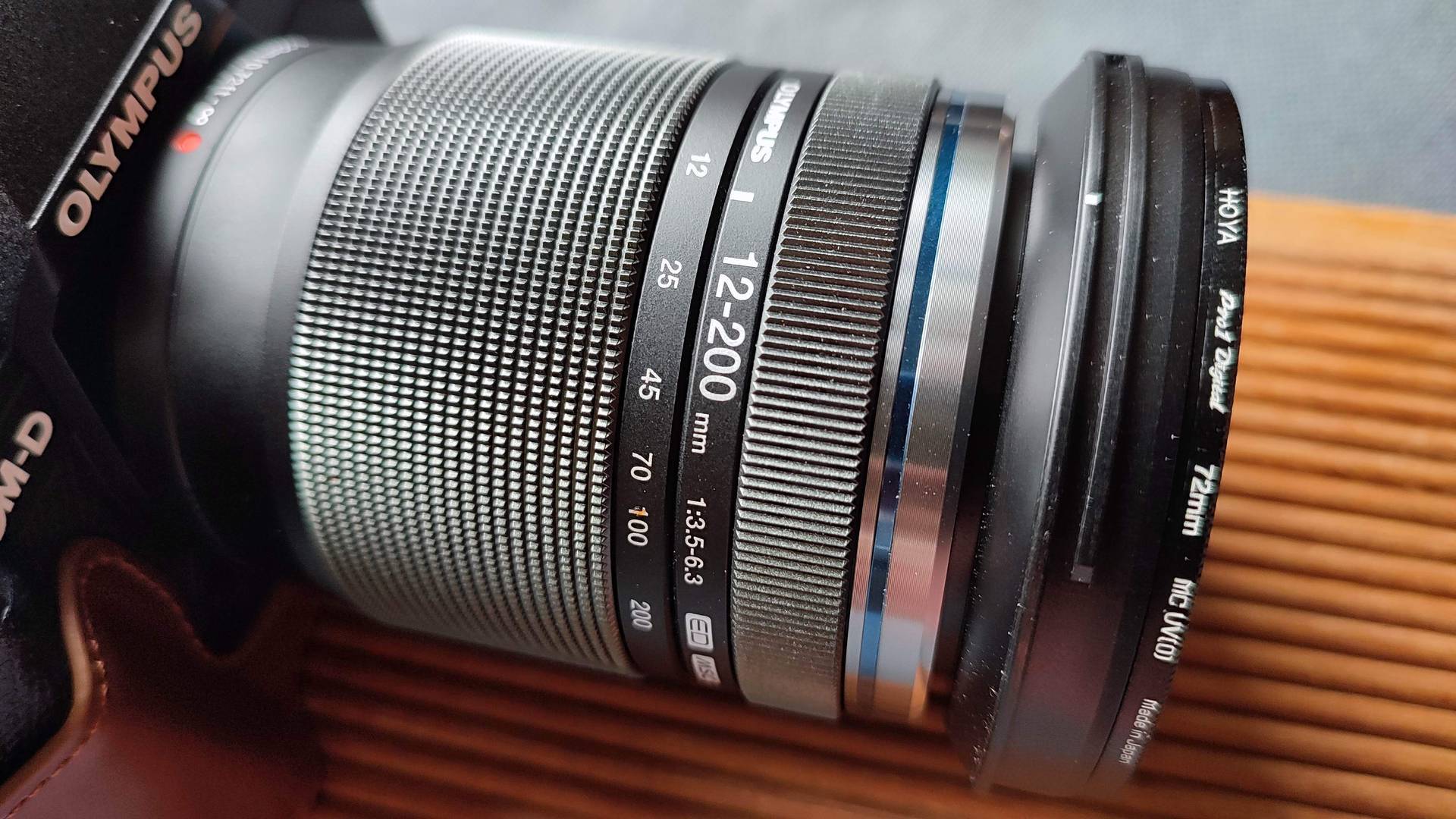
Personally, I rarely use it myself, but there are times when I choose to have a large range but carry little. A few months ago was one of those moments, but when I got home, I wasn’t impressed with the photos, especially those taken at a longer focal length, but I didn’t really think much of it. A few days ago, I had it with me again, and upon returning home and viewing them on the computer, I realized that, although the 12-200mm isn’t the best Olympus lens, the results were really below par in my opinion – and then I thought, it can’t be … could it ?

So I did the Hoya test again, just like with the Olympus 300mm f4 Pro, and guess what … yes, indeed, the filter that many reviews say is good, a Hoya Pro 1 Digital 72mm MC UV, made my photos less sharp than what the lens is actually capable of. The filter used is not the one I found to be bad in the previous test – nor is it the replacement I bought for the test back then – no, this is a new filter I bought from a reputable store to protect the lens glass – no fake cheap stuff !
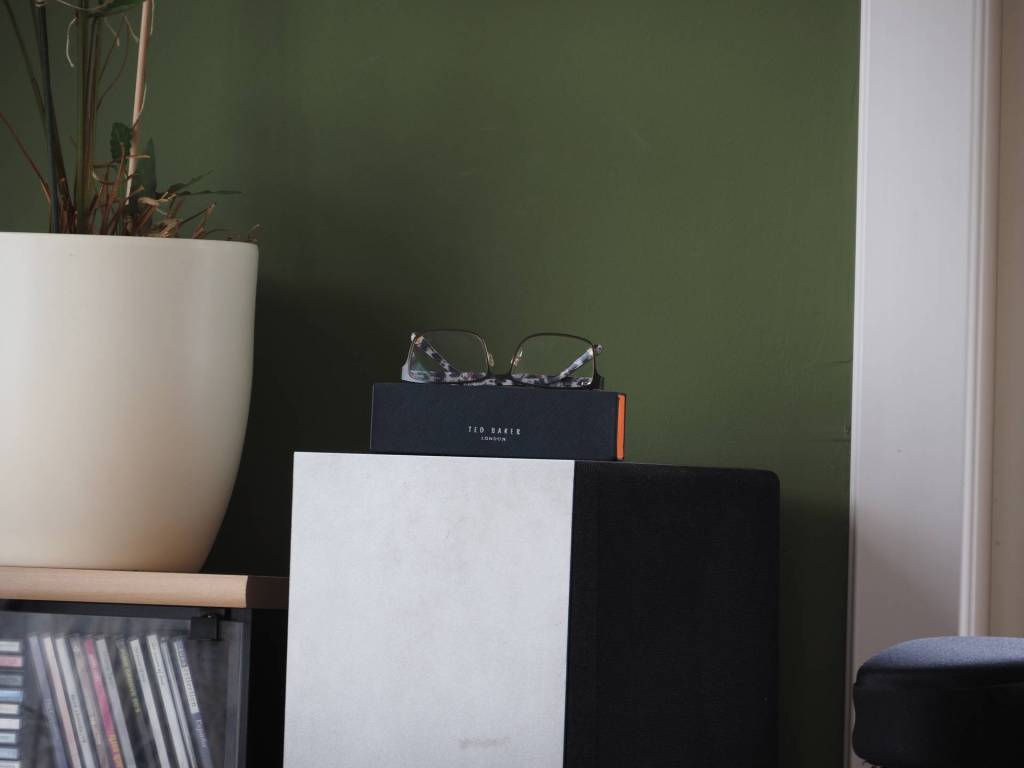
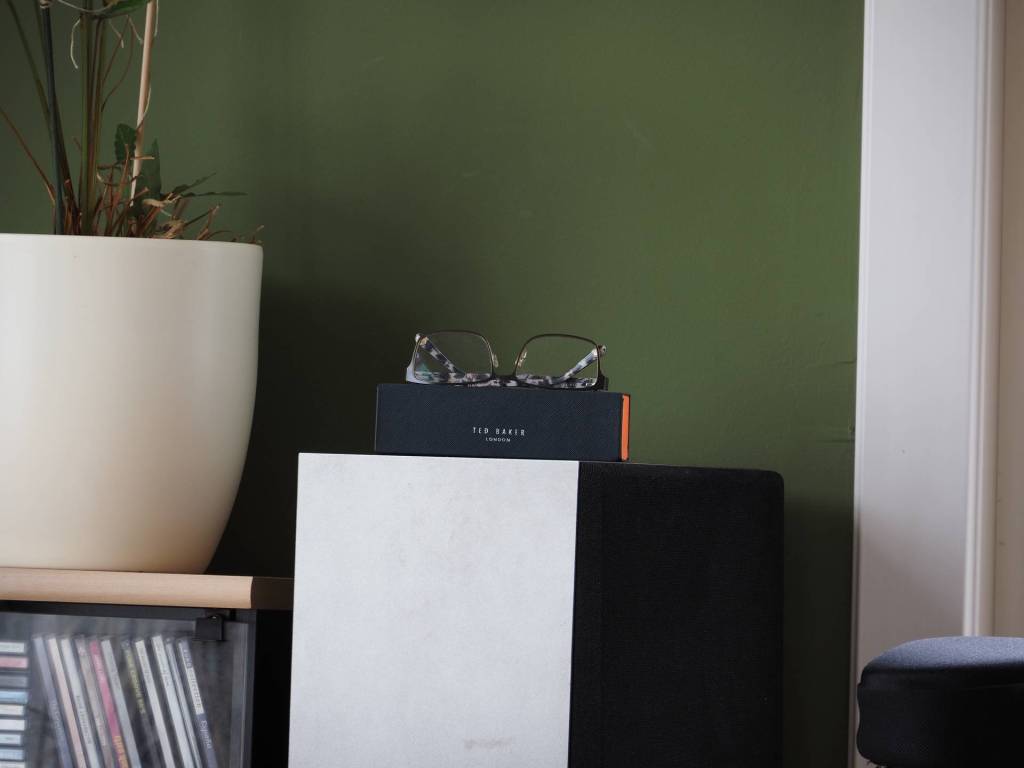
The two photos above are respectively, left with Hoya filter, right without filter. Note a small contrast/color difference with and without a filter.
Test performed almost exactly like the one with the Olympus 300mm f4 Pro, meaning: camera was placed on a table, timer used for the shot – fixed ISO, aperture, and shutter settings, so, quick and dirty but controlled 🙂
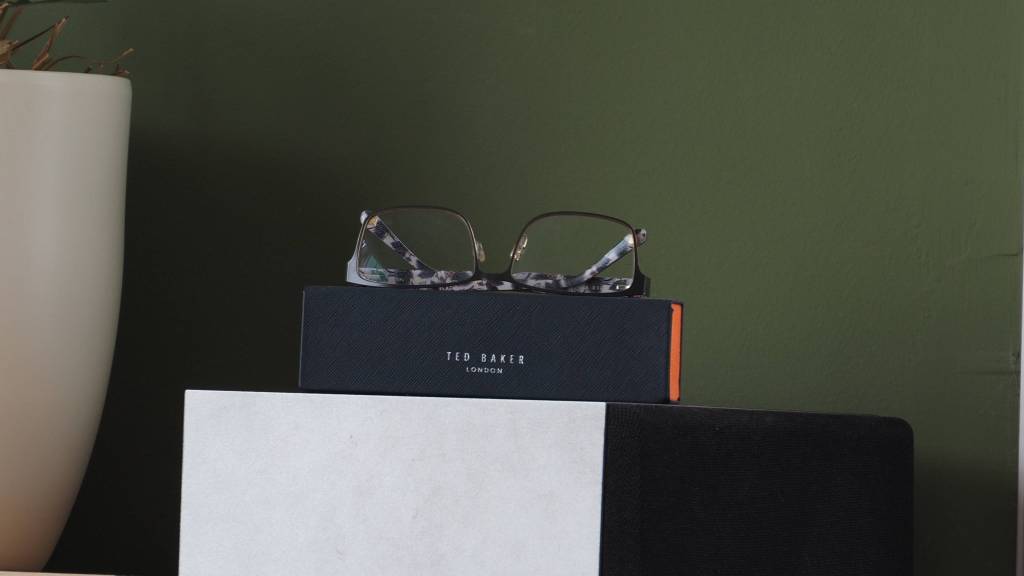
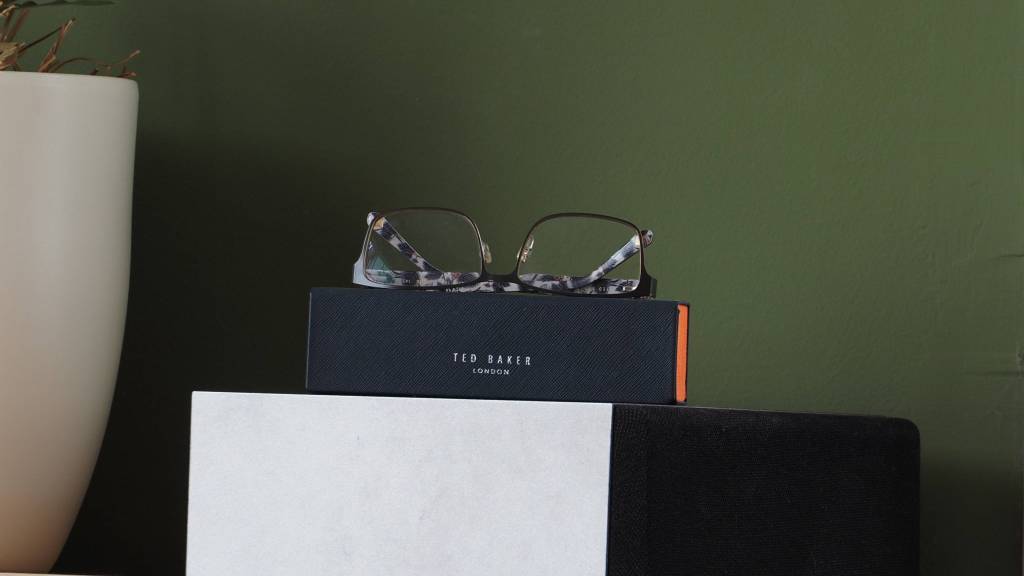
Cropped above, left with and right without filter – below detail comparison side by side, same as above, left with and right without filter.
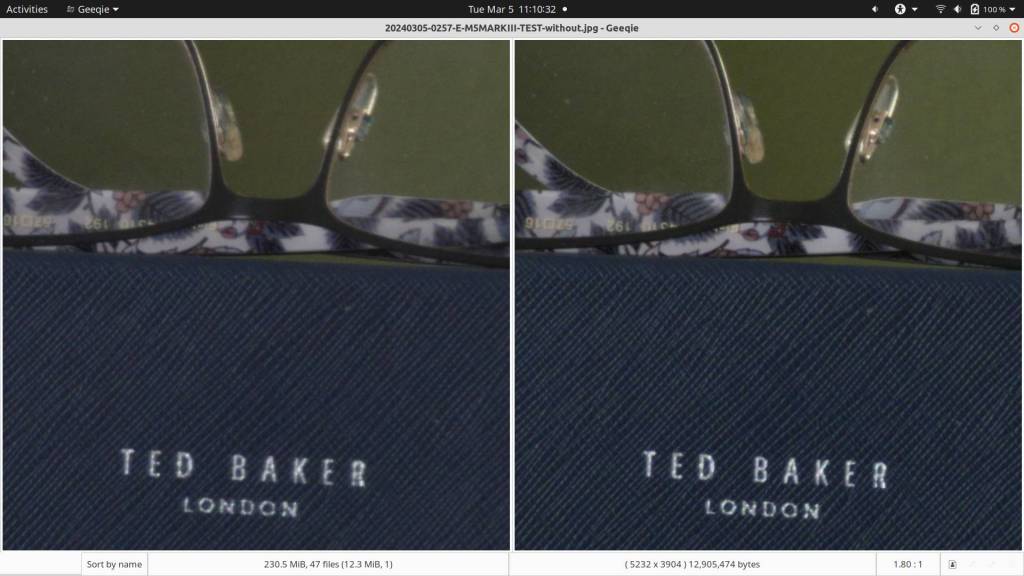
It may not seem like much difference, but if, for example you photograph a bird and afterwards zoom in on details or want to crop,
it quickly becomes clear that there is a lot of blur.
Although using a filter to protect your glassware seems like a good idea, I think it is better to leave it off, and instead always mount your lens hood, it will at least protect your lens against unwanted collisions.
A few days later, I did another outdoor test. Unfortunately, no cormorant this time, but I did spot a small kestrel, although it was much farther away. It might be a bit of a tricky comparison, but the test photos of the glasses should really speak for themselves.
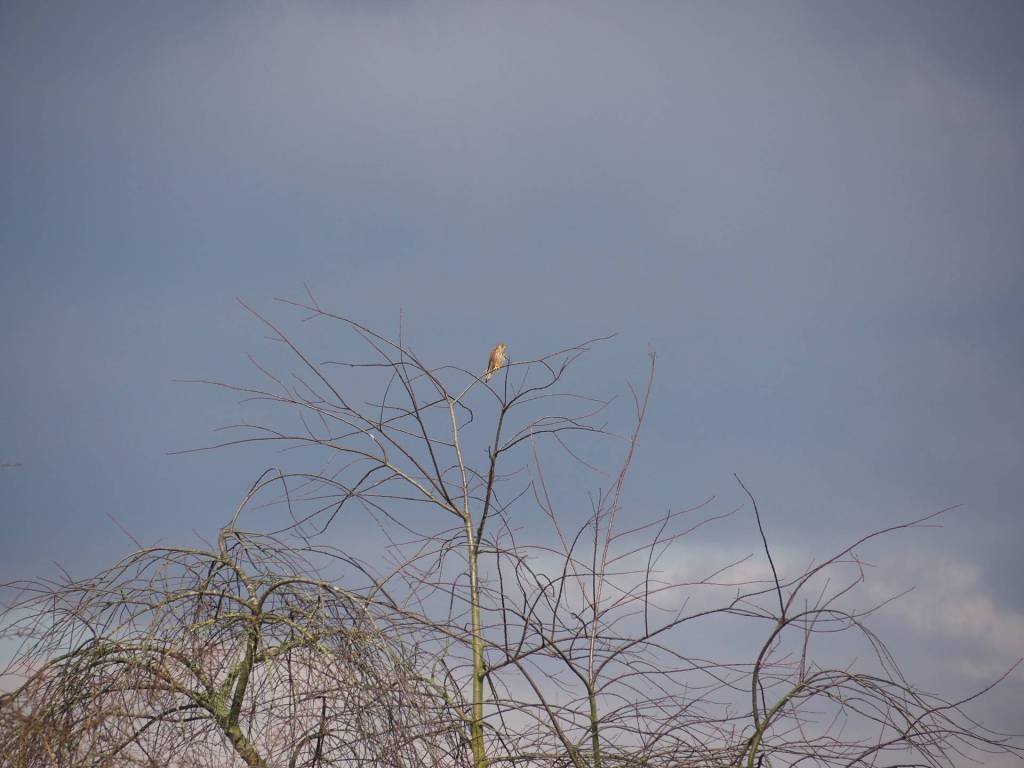
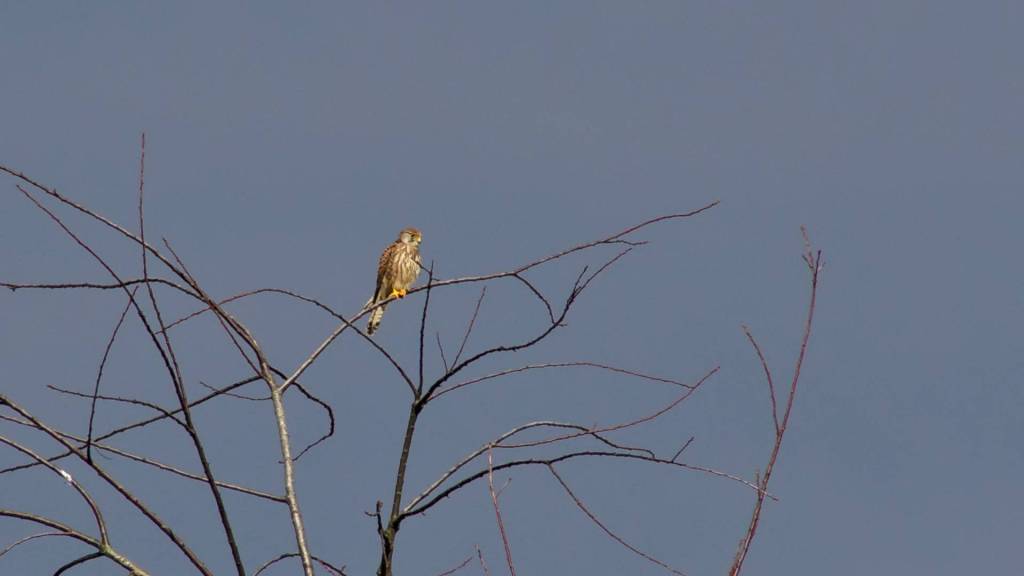
Scroll down to find the link to the original article on “La Gallerie”.
Makes you think about the usefulness of filters, doesn’t it ?
Because you might now be thinking “I’ve never had any problems with filters”
but have you ever made the comparison with and without ?
Maybe you should give that a try, right ?
Well, I think I’ve learned my lesson now, or at least I hope so 🙂
Review in a Nutshell :
But, is the Olympus ED 12-200mm f/3.5-6.3 a good lens ?
well, personally I think – for the use for which it is intended – and that is for travel photography and occasional photography,
it does what you can expect,
namely providing usable results over most of its range.
So, it is certainly not a lens for bird and nature photographers, nor for macro,
however, for general photography :
landscapes, streets, architecture, sun and sea, even in the zoo,
not too close and not too far,
that’s where this lens shines !
Even though the mount is metal, the general construction quality is mainly plastic, and does not give you the impression that it can take a beating.
However, it is dust, splash and freeze proof and has a seal on the lens mount, so it still offers you reasonable protection when used on a weather sealed camera like the E-M5, E-M1 or OM-1.
If you can protect the camera and lens with a soft or neoprene pouch, you can still take it to rough and wet terrain.
Pros: Great range: 12-200mm = 24-400mm Field of View (FOV) in 35mm film camera.
Cons: Not inexpensive (though this lens replaces two to three other zoom lenses) – feels quite plastic-like, not very sturdy – image quality not outstanding.
Recommendation: Suitable for travel, family events, backpacking, city trips…
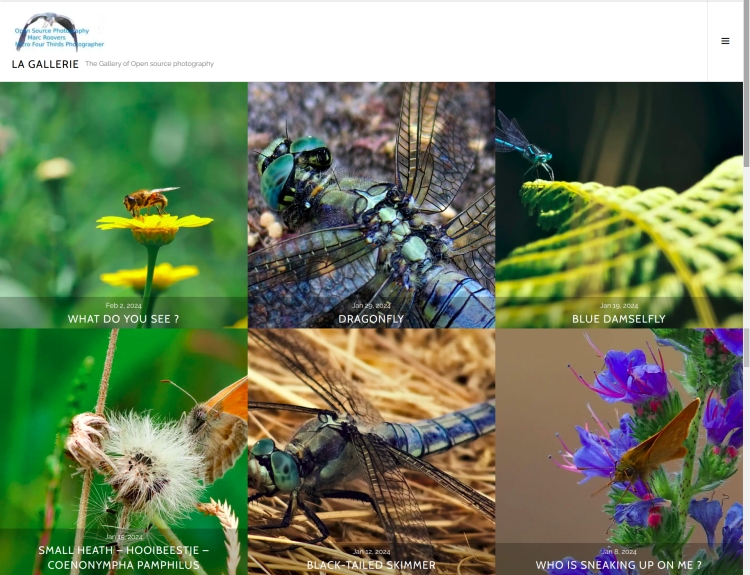
The photo gallery of Open Source Photography, Olympus micro 4/3 system, Vintage Lens Photograpy, Film Simulation, PictureFX, HDR – Photographer : Marc R.
Discover more from Open Source Photography
Subscribe to get the latest posts sent to your email.


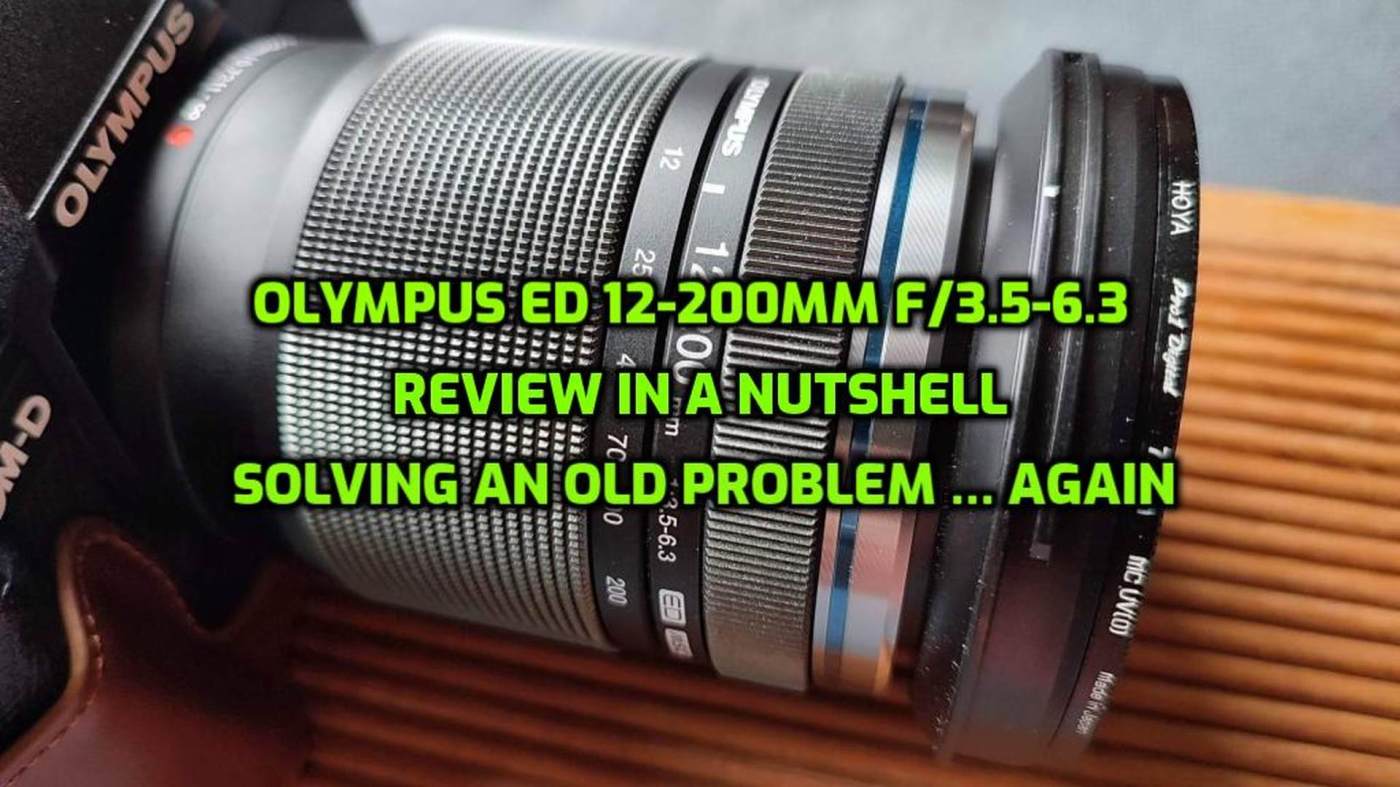

Great article. I’ve never used UV filters on my lenses, until I got my latest Nikon, and I’ve only put them on the lens because they are so much larger and area than my Fujifilm lenses were. I already noticed some extra sun flare with the one on my Z24-70 which didn’t give such problems without the filter.
Your article is definitely food for thought.
LikeLiked by 1 person
Thank you Mark, normally it wouldn’t catch my attention, to be honest, but with bird and wildlife photography, you tend to crop more, and then the blurriness becomes noticeable quickly. Of course, it won’t only happen with Hoya, but because they had such a good reputation, I didn’t expect this – makes you wonder what a cheap filter would do then. Also, thanks for subscribing to my gallery, Mark. Have a great weekend !
LikeLiked by 1 person
Thank you, for some reason I thought I was subscribed to La Gallerie, when I noticed I wasn’t, of course I subscribe! Keep up the excellent work.
LikeLiked by 1 person
👍 ✋
LikeLiked by 1 person
Being an amateur, I did lots of reading and camera/lens reviews before I bought my first Canon DSLR in December 2010…….AND a UV lens to protect my 100mm f2.8 macro lens (which was my first lens to do flower photography). Would you believe I somehow dropped my camera on the kitchen floor while trying to put it on the (new) tripod. The AUS$29.95 filter broke but the AUS$768 macro lens didn’t. I’ve used a filter to protect my lenses ever since. With my poor vision I probably can’t tell the difference anyway, but I did wonder about your Cormorant shot when I saw it.
To me it looked soft in focus and I was thinking my eyesight must be getting REALLY bad now.
Maybe it was the filter as you mentioned.
LikeLiked by 1 person
Hi Vicki, Ted here. I dropped a Canon 100-400. The filter bent, but the lens survived. At $ 2,000 US for the lens I placed another filter on it. Hope all is well.
LikeLiked by 1 person
Well Vicki, accidents happen quickly, and I think everyone experiences something like this at some point. As Ted also writes here, apparently not all filters are created equal, even two of the same batch and brand – I’ve had the same experience. The main reason for my article is to make people aware of this fact, and not always blame the lens right away. Whether it’s a cheap or expensive lens, we all want to protect them. Even using a lens hood provides some protection against accidental bumps. The photo of the Cormorant became blurry when heavily zoomed in, because at normal view, probably no one would notice anything. By the way, I plan to publish more of those blurry photos; it’s a beautiful bird, and I hate to waste the pictures 🙂 Have a great weekend, Vicki !
LikeLiked by 1 person
Good timing on this, as usual for you.
I always use filters for protection, but have found not all are created equal, even two of the same. I had a nice Canon 24mm prime which gave fuzzy shots in low light, exactly what I needed it for. Then, started shooting with no filter it was fine.
I’m also considering the 12-200 for a middle length range. I do have a very old and cheap 40-150 that is not very good, but my cost was about the same as ‘McDonalds Happy Meal’ used. No loss. Not new at this I know the usual short comings of this style, I used a Tamron 18-400 as a walk around lens for years. That also was not cheap.
Thanks again for another good informational piece. I will probably get the 12-200 for travel. It’s lighter and easier than dragging a bigger lens through airports and heavy bags.
LikeLiked by 2 people
Haha, well, it seems like that’s starting to be the case. First with the switch to m4/3 probably, then the Leica lens and now this 12-200mm. It’s exactly as you write, for travel, this is ideal, reasonably small and light – not Leica quality or sharpness yet, but decent and usable results with a huge range. If you have an E-M5 MKIII or OM-5 alongside it, then you have a compact and light combination. Have a great weekend Ted !
LikeLike
If I get any more cameras I’m in trouble. However, slowly my Canon gear is all migrating to my Wife’s camera shelves…so maybe.
LikeLiked by 1 person
Merci Marc pour cet excellent article sur la pertinence d’utiliser un objectif zoom tout usage.
Ayant fait quelques experiences similaires avec les objectifs M.Zuiko 14-150mm et Lumix G Vario 14-140mm, vos conclusions confirment mes impressions personnelles sur ces optiques si attirantes dans leur versatilité mais comprenant aussi de notables compromis dans leur rendu d’image. Ces compromis a la fois optiques et logicielles les rendent beaucoup moins attrayants en post-production et exigent une maitrise supérieure pendant la prise de vue pour la composition de l’image, l’exposition et la mise au point. De plus leur dimensions accrues réduit d’autant leur discretion en voyage ou en photographie urbaine.
Merci encore pour tous ces articles instructifs et bonne journée!
LikeLiked by 1 person
De rien Daniel,
Ce que vous dites est correct, il n’y a pas de raccourcis,
que des compromis, et ils ont toujours un prix.
Passez un très bon week-end !
LikeLiked by 1 person
UV filters serve no purpose on digital cameras, only adding a reflective lower quality glass element in front of a lens not designed for it. Just use the lens hood and cap for protection.
LikeLiked by 1 person
Exactly. I’ve been shooting since before digital and have only ever used hoods to protect my lenses, drop them, knock them and none have ever scratched or broken and I get the detail lens manufacturers designed the lens for. There literally is no filter that can match the quality of the glass a lens manufacture produces smh
LikeLiked by 1 person
Hi Sam,
You’re absolutely right—the lens hood is the best protection, enhances contrast, and blocks stray light effectively. Thanks so much for your comment! I hope to see you back here again soon.
Best regards,
Marc
LikeLike
Dear Arthur,
I’m fully aware that UV filters don’t serve much purpose—at least, not in terms of filtering. The only reason I used them was for an extra layer of protection. I don’t always use lens hoods, and cleaning dirty lenses after a day of bird photography in salty, wet, and windy environments isn’t something I enjoy. So, in that sense, they do have their use. However, if they affect the image quality or reduce sharpness, that indeed becomes a problem.
For now, I’ve switched to using the lens hood out of necessity, although it doesn’t protect against dirt, moisture, or salt.
Thanks for your visit and comment!
Hope to see you again.
Marc.
LikeLike